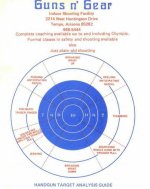Firepower_426
New member
As a new shooter, I'm still VERY jumpy and seem to anticipate my recoil (amongst a million other things). Is there anyway that I can break these habits? Is there anyway to over recoil besides shooting off a zillion rounds?
It's almost kinda embarassing, it's only a 9mm XD 5", but I'm still pretty damn jumpy. It really throws off my accuracy... something that is discouraging as a new shooter.
Thanks for any suggestions!
It's almost kinda embarassing, it's only a 9mm XD 5", but I'm still pretty damn jumpy. It really throws off my accuracy... something that is discouraging as a new shooter.
Thanks for any suggestions!

